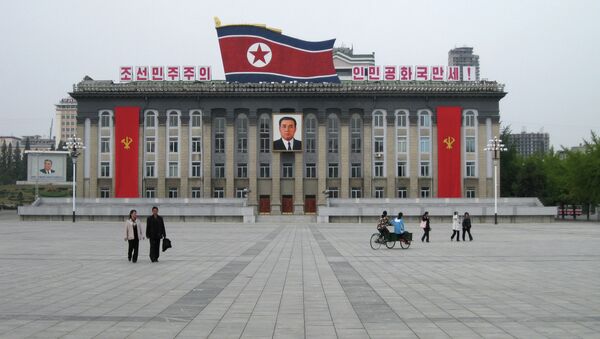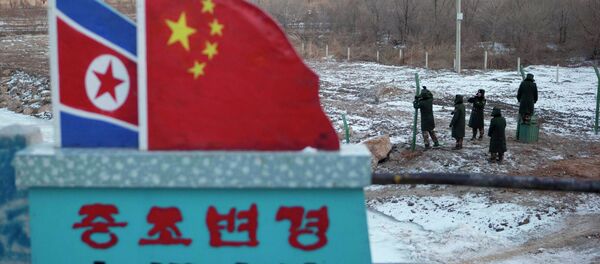According to the expert, North Korea's nuclear program doesn't threaten Washington directly (as the latter is located too far away and is not accessible for its missiles), but rather targets the US' close allies in the region, such as Japan, South Korea and other countries.
"The United States must first ensure the safety of its allies in order to conduct a pre-emptive strike on North Korea," the expert told Sputnik Korea.
This is why Pyongyang has concentrated its efforts on developing short- and medium-range missiles.
In this regard, North Korea's strategy is based on the Soviet legacy from the Cold War, the expert argued. During the Cold War, the USSR created short- and medium-range missiles such as the SS-4 and SS-5 which were capable of targeting Washington's allies in Europe.
Lacking technology to develop strategic missiles equal in their power to those of Washington and capable of directly attacking the territory of the United States, Soviet authorities decided to block the possibility of pre-emptive strike on the part of the US by creating a weapon which could target its closest friends.
The same logic has been applied by North Korean leaders to their nuclear strategy, Lee Suhyeong stated.
"If Washington doesn't ensure the safety of its friends, then a preemptive strike becomes impossible because of the threat to allied countries, and this is the main idea which North Korea's military strategy is based on," the expert explained.
On February 12, 2017, Pyongyang carried out a successful test of an intermediate-range nuclear-capable ballistic missile. Launched from an airbase in the western province of North Pyongan, the missile was reported to have traveled about 480 km before plunging into the Sea of Japan.
North Korea's neighbors warned Pyongyang that they saw the latest missile launch as a provocation, and a violation of a UN Security Council (UNSC) resolution prohibiting it from carrying out ballistic missile tests.






